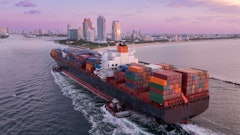
Fatal accidents are a tragic occurrence for all parties involved. The transportation industry – including telematics providers – should make preventing these tragedies its highest priority. With the use of telematics, the latest in video technology and connected vehicles, many of these incidents can be prevented through consistent – and proactive – vehicle maintenance and continuous driver monitoring, coaching and evidence-based accountability, saving countless dollars across the industry, and more importantly, many lives.
For better or worse, the proliferation of civil cases with jury verdicts totaling more than $10 million, known as “nuclear verdicts,” has significantly altered the business of fleet management. For instance, insurance premiums have doubled every several years while general inflation marches at a much smaller pace, according to The Wall Street Journal. When a nuclear verdict hits a mid-sized trucking company, it often triggers a ripple effect throughout the industry. While the company that faces the judgment could be bankrupted, others that have nothing to do with it could see their insurance premiums spike as well.
This economic fall-out comes from the financial needs insurance providers have to keep cash reserves available for massive verdict-induced payouts. With more nuclear verdicts in the industry, the more cash is needed. With every verdict, each fleet client is seen as a riskier and riskier business - even if nothing has changed within a particular fleet. In order to collect so much money, insurance companies have been increasing premiums on a regular basis and those growing costs have cut deep into the profits of fleet managers. The only way to reverse it is through serious investments in safety, especially telematics solutions. With fewer accidents comes fewer civil complaints and, ultimately, a rebalancing of the risk equation from an actuarial standpoint, which benefits everyone.
The potential to protect drivers and pedestrians cannot be understated. Telematics solutions when implemented with driver safety education, accountability and disciplinary action for negligent drivers will prevent the tragic loss of life more effectively than even the harshest nuclear verdicts because they are based on proactive and predictive analytics – not a reactive civil procedure that only begins after the tragedy has occurred.
Currently, juries have been triggering huge payouts, and much has been made about their validity. Some legislators have called for capping nuclear verdicts to stabilize the economics within the sector, while others have called for steeper burdens of proof. But, whether you are for reforming liability laws or just think the system is unfair, nuclear verdicts do in fact serve a very important purpose in the transportation industry; they hold fleet businesses to a higher accident accountability standard, given the weight and potential danger of the size of their vehicles.
This is not to say that the current system is perfect. The routine enormous payouts and trickle-down effect they have on the industry as a whole will inevitably have unintended consequences and could harm those who’ve done everything right. However, even those who are against compensatory damages as a practice are still motivated to reduce the number of fatal accidents just from a moral standpoint.
The telematics détente
One of the best ways to reduce a fleet’s accident rate and nuclear verdict exposure is to utilize telematics. According to the Federal Motor Carrier Safety Administration, vehicles equipped with telematics software have been linked to safer driving patterns as well as better fuel economy and fewer emissions.
Due to advancements in sensor technology, data processing and the Internet of Things (IoT), vehicles are “connected” to the point where fleet managers and compliance officers can see into a driver’s cabin, out the windshield or through an overhead virtual “drone view” to spot dangerous situations in real time. Other features from advanced telematics platforms can calculate tire pressure, balance, speed, altitude and general wear and tear on a vehicle. All of this functionality goes a long way toward preventing accidents.
Getting the data is the easy part. The key is analyzing all of it properly and taking action before something bad happens. Since the amount of data to be attained by an advanced telematics platform is nearly infinite, the best way to make sense of it all is to apply an equally impressive filter powered by artificial intelligence (AI).
Dashboard cameras that focus and move based on machine learning algorithms can pick up threats on the road at a rate that is far superior to what a driver or back-office compliance officer can do. Inside the vehicle, AI-powered video cameras can pick up on driver fatigue behaviors, which could be a precursor to an accident.
Safety analytics also are crucial for providing proactive maintenance on fleets so that parts don’t malfunction while vehicles are in service. Even if a driver is performing as carefully as possible with a fully optimized analytics platform, there is still a risk that the vehicle could have a problem that leads to an accident. Often these mechanical failures can be addressed ahead of time, which would prevent critical injury or loss of life. On the road, the stakes are too high to ignore such measures now that the technology is widely available.
Global positioning systems (GPS) inform fleet managers and drivers - and possibly customers - where the vehicle is on its route and compares its progress to other relevant data sets such as traffic patterns and nearby hazards. This information is useful not just in managing vendor relationships and fleet efficiencies, but also in helping drivers avoid dangerous areas or accident hotspots. Any action to avoid tragedy, no matter how small, is worth it once you consider the magnitude of how tragic and costly an accident can be.
The ultimate safety precaution, though, is not the computer, the data analyst or even the juror in a negligence case. It’s the drivers, themselves. They are the ones who are responsible for the safety of the vehicle while it is in service. The telematics and continuous video monitoring capabilities are merely tools to help drivers perform at the best of their abilities. To incentivize this, fleet managers can use telematics and video footage to coach drivers, reward them and maintain scorecards detailing their progress and/or specific areas that need improvement.
Additionally, fleet and safety managers need to be highly disciplined in the back offices to follow through on the coaching and training on a regular basis to ensure better techniques are being adopted and followed consistently by the drivers.
Through the right software investments, fleet companies can correct poor driving patterns and prevent many accidents. Broad adoption of these technologies will only make the roads safer and lessen the occurrence - warranted or not - of nuclear verdicts. The solution to our safety problem is not only a legal one. The trucking industry needs to evolve, innovate and thrive with or without nuclear verdicts. Accidents can happen – some with tragic consequences – but most can be avoided entirely with better driving behaviors, time management and vehicle upkeep.
Today, more than ever, we have the ability to enable safer driving behaviors through the latest in telematics and video monitoring technology. Whether the decision to invest in protecting your fleet – and the general public – with this technology is moral, economic or both, it is still the right thing to do.













